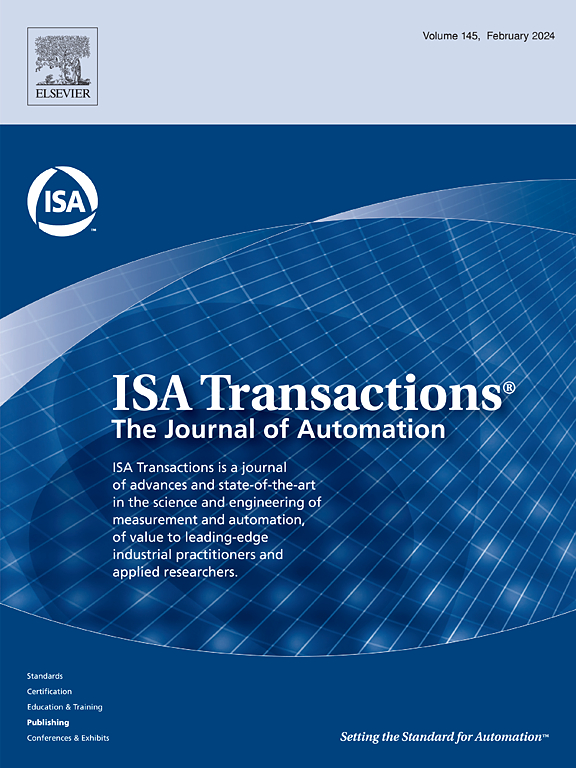Beyond seen faults: Zero-shot diagnosis of power circuit breakers using symptom description transfer
IF 6.5
2区 计算机科学
Q1 AUTOMATION & CONTROL SYSTEMS
引用次数: 0
Abstract
Power circuit breakers (CBs) are vital for the control and protection of power systems, yet diagnosing their faults accurately remains a challenge due to the diversity of fault types and the complexity of their structures. Traditional data-driven methods, although effective, require extensive labeled data for each fault class, limiting their applicability in real-world scenarios where many faults are unseen. This paper addresses these limitations by introducing symptom description transfer-based zero-shot fault diagnosis (SDT-ZSFD), a method that leverages zero-shot learning for fault diagnosis. Our approach constructs a fault symptom description (FSD) framework, which embeds a fault symptom layer between the feature layer and the label layer to facilitate knowledge transfer from seen to unseen fault classes. The method utilizes current and acceleration signals collected during CB operation to extract features. By applying sparse principal component analysis to these signals, we derive high-quality features that are mapped to the FSD framework, enabling effective zero-shot learning. Our method achieves a satisfactory recognition rate by accurately diagnosing unseen faults based on these symptoms. This approach not only overcomes the data scarcity problem but also holds potential for practical applications in power system maintenance. The SDT-ZSFD method offers a reliable solution for CB fault diagnosis and provides a foundation for future improvements in symptom-based zero-shot diagnostic mechanisms and algorithmic robustness.
超越所见故障:利用症状描述传递对电力断路器进行零故障诊断。
电力断路器(CB)对电力系统的控制和保护至关重要,但由于故障类型的多样性及其结构的复杂性,准确诊断其故障仍是一项挑战。传统的数据驱动方法虽然有效,但需要为每个故障类别提供大量标注数据,这就限制了它们在许多故障都不可见的实际应用场景中的适用性。本文通过引入基于症状描述转移的零点故障诊断(SDT-ZSFD)来解决这些局限性,这是一种利用零点学习进行故障诊断的方法。我们的方法构建了一个故障症状描述(FSD)框架,在特征层和标签层之间嵌入了一个故障症状层,以促进从可见故障类别到未知故障类别的知识转移。该方法利用 CB 运行期间收集的电流和加速度信号来提取特征。通过对这些信号进行稀疏主成分分析,我们获得了高质量的特征,并将其映射到 FSD 框架中,从而实现了有效的零点学习。我们的方法可以根据这些症状准确诊断出未见故障,从而达到令人满意的识别率。这种方法不仅克服了数据稀缺的问题,还具有在电力系统维护中实际应用的潜力。SDT-ZSFD 方法为 CB 故障诊断提供了可靠的解决方案,并为未来改进基于症状的零点诊断机制和算法鲁棒性奠定了基础。
本文章由计算机程序翻译,如有差异,请以英文原文为准。
求助全文
约1分钟内获得全文
求助全文
来源期刊

ISA transactions
工程技术-工程:综合
CiteScore
11.70
自引率
12.30%
发文量
824
审稿时长
4.4 months
期刊介绍:
ISA Transactions serves as a platform for showcasing advancements in measurement and automation, catering to both industrial practitioners and applied researchers. It covers a wide array of topics within measurement, including sensors, signal processing, data analysis, and fault detection, supported by techniques such as artificial intelligence and communication systems. Automation topics encompass control strategies, modelling, system reliability, and maintenance, alongside optimization and human-machine interaction. The journal targets research and development professionals in control systems, process instrumentation, and automation from academia and industry.
 求助内容:
求助内容: 应助结果提醒方式:
应助结果提醒方式:


